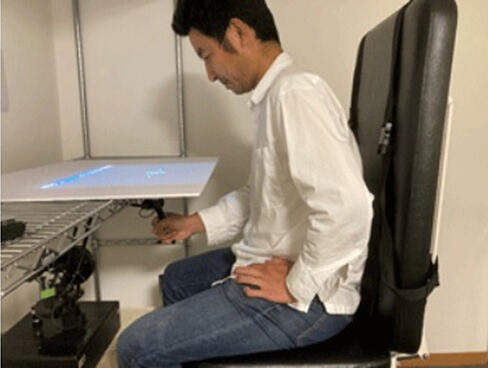Working with a group at Honda R&D, Senior Researcher Nobuhiro Hagura and Researcher Kisho Ogasa (at the time of research) at the Center for Information and Neural Networks (CiNet), Future ICT Research Institute of the National Institute of Information and Communications Technology (NICT), have overturned a conventional theory of motor learning. They showed that uncertainty before a decision leading to execution of a movement is reflected in motor learning. This indicates that uncertainty itself has a significant impact of motor learning.
Conventional theories of decision-making and motor control have assumed that once a decision is made, the same motor command is executed regardless of the degree of uncertainty in the decision. However, the research group overturned this idea and revealed that the brain distinguishes between movements made with and without uncertainty and executes them as different movements. The group claims that the research results will lead to the development of new sports and rehabilitation instruction methods, such as allowing motor learning to be performed in a manner that is suited to a range of decision-making situations. The results were published in the online edition of the British scientific journal Nature Human Behaviour on June 11.

Provided by the National Institute of Information and Communications Technology
In a football (soccer) penalty shootout, a player may decide to confidently kick the ball to the right corner upon observing the goalkeeper moving in the opposite direction. Alternatively, the player might make the same kick while being unsure about the goalkeeper's movement. Since both these movements are apparently the same, it has been believed that the brain sends the same command for this "kick to the right corner" movement. In other words, previous theories of decision-making and motor control held that once a decision is made, the same movement is executed independent of the degree of uncertainty in the decision.
However, this research reversed previous thinking and revealed that the brain distinguishes between movements made with and without uncertainty in the decision, and discovered that they are memorized as two different things in the brain. In other words, the "process leading to the decision" and the subsequent "movement" are learned and stored as a set in the brain. This means that no matter how much a player practices kicking into an empty goal, they will not necessarily be able to kick the ball to the same place in the same manner in a situation where the goalkeeper is present, since the uncertainty level is different. This suggests that movement practice needs to be done in conjunction with a decision-making situation.
The research group asked the participants to hold a robotic lever (manipulandum) and sit in front of a device to perform the following experiment. A number of dots were displayed in the center of the screen, and participants were asked to judge whether the overall movement of the dots was to the right or to the left. Then, they moved the lever in the same direction of the decision. The participants were divided into two groups: 1) for whom it was easy to judge the movement of the dots ("the certain" group: dot coherence level 100%), and 2) for whom it was difficult (the "uncertain" group: dot coherence level 3%). Participants' hand movement to express the decision was pushed by the robotic handle to deviate from the straight path. Under this perturbation, both group of participants were instructed to make a straight movement by resisting the force.
Participants in both groups were able to learn to make a straight movement, but only when the same level decision uncertainty preceded the movement. This is because the presence or absence of uncertainty before a movement served as a cue to distinguish between movements, thus, the brain classified the action following the two different decision uncertainty levels as different actions. A similar experiment was conducted with participants sitting in front of the device holding the robotic lever. However, this time, the movement following a certain decision was disturbed with a force towards the clockwise direction, whereas the movement following an uncertain decision was perturbed towards the counterclockwise direction.
Even though they are making an apparently same movement, participants were able to learn the two movements with different perturbations at the same time. The research group interpreted these results to the fact that the presence or absence of uncertainty before a movement served as a cue to distinguish between movements, allowing the participants to learn what type of force to use to counter each disruptive force. In other words, uncertainty before a movement "tags" the subsequent movements as separate.
This article has been translated by JST with permission from The Science News Ltd. (https://sci-news.co.jp/). Unauthorized reproduction of the article and photographs is prohibited.




